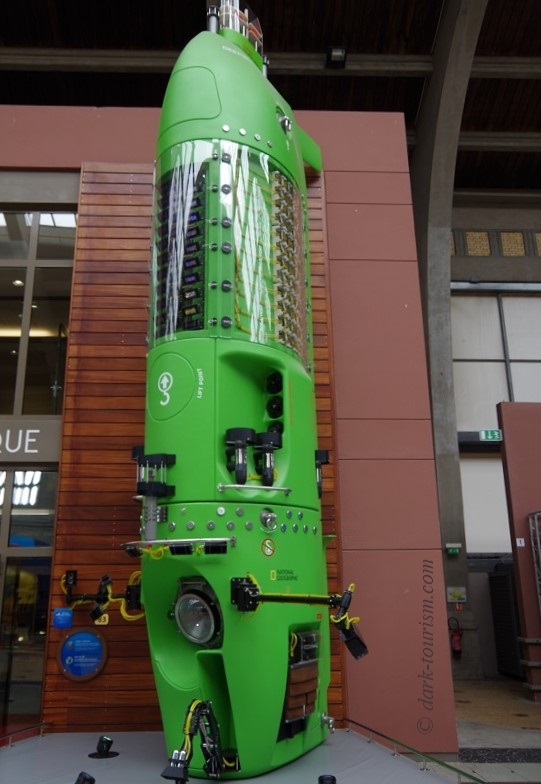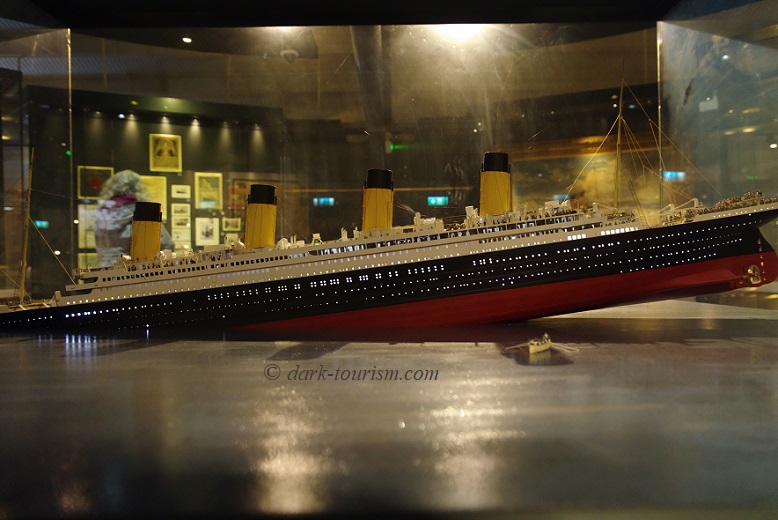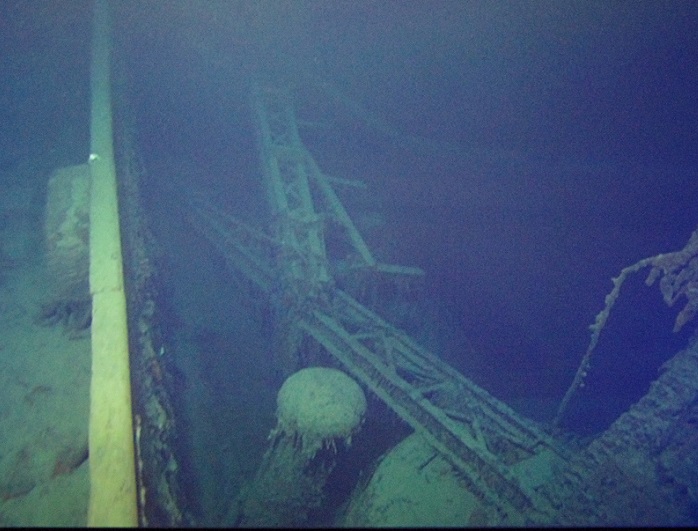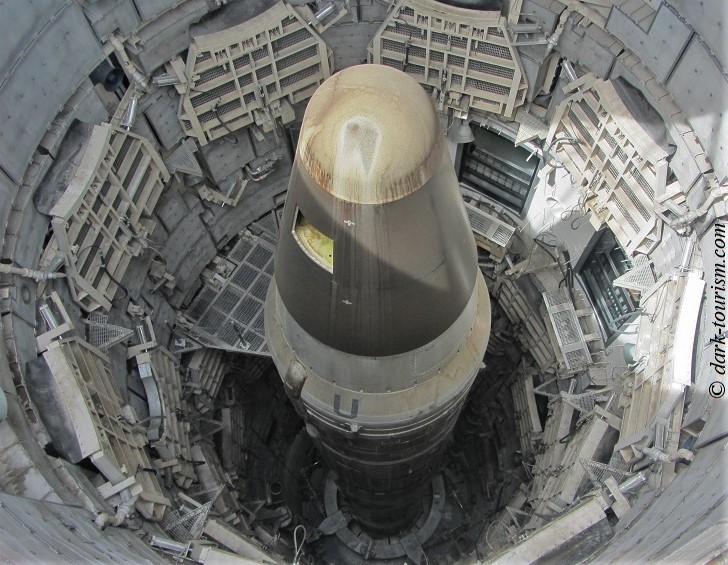It’s been only a few weeks since I published the latest previous Blog Post “Belfast and the Titanic”, based on my recent travels to Northern Ireland.
Now the Titanic has suddenly made headlines in the media worldwide – for all the wrong reasons. You will have probably seen those headlines yourself, but here’s my summary of events as they unfolded (based mainly on my following the dedicated live news thread on the Guardian online – external link; opens in a new tab):
A deep-sea submersible called Titan carrying five crew and passengers on a dive down to the wreck of the RMS Titanic lost contact with the surface mother ship on the morning of Sunday 18 June, an hour and 45 minutes into its dive. This means that by that time Titan would most likely have reached the wreck, which lies on the ocean floor at a depth of ca. 3800m, or would at least have got very close to it. Loss of communication has happened numerous times before on such dives, but so far only ever temporarily. As the clock ticked away on Monday and there was still no sign of, or signal from, the vessel, the worries as to its whereabouts grew serious. Experts in the field already said on Tuesday that they weren’t too optimistic. One even ventured that he’d feared all along such an incident would occur one day. It’s always been clear that expeditions to such depths of the ocean are inherently dangerous, indeed life-threatening.
Then the news came on Tuesday of banging sounds that had been picked up by the search teams, namely every half hour for a few minutes. The nature and regularity of these signals strongly suggested that they were coming from the sub. Apparently the pattern is what submariners are taught and it’s what submarine experts on the surface had been hoping for. One report said that these signals were still being picked up on Thursday (which was later contested, though).
With on-board oxygen supposed to last for 96 hours, there were initially hopes of getting to the vessel in time to save the lives of the five men inside. However it was a major search operation, made highly complex by all the debris from the wreck of RMS Titanic that search robots using sonar wouldn’t find easy to distinguish from a possible submersible. And if the vessel turned out to be immobilized or entangled in wreck debris, unable to make it back to the surface on its own, it was always clear that it would be an extremely complicated operation to try and retrieve the vessel with its passengers alive even if it was located in time.
And even if the submersible had somehow made it to the surface of the ocean on its own, as some analysing the nature of the banging signal tentatively suggested, it would not have meant safety for those on board, as apparently the entrance hatch of the submersible is bolted shut from the outside. So without a rescue team getting to it in time and opening the hatch, the oxygen supply inside would still run out. You couldn’t imagine a more tragic scenario.
Over the course of Thursday, as at least two deep-sea robotic vehicles went down to the ocean floor to search for the stricken Titan, the 96-hour oxygen supply would have run out – although some experts said that the figure was only an estimate and much would depend on how the people on board behaved in order to conserve their oxygen supplies beyond that margin. Yet, the outlook as stated by various experts involved became increasingly bleak.
By Thursday midday there was no more mention of those banging signals so it was unclear whether any were still being picked up or if they had stopped.
Then on Thursday evening the story took a dramatic turn: ROVs (remote-operated vehicles) launched to search for the vessel discovered pieces of wreckage that were quickly identified as having come from Titan, especially the front and rear half of the craft’s main pressure hull. It was concluded that the vessel must have suffered a “catastrophic failure”, i.e. that it imploded, possibly as early as Sunday morning at the time contact with the sub was lost. That way at least the five people on board would have died instantaneously rather than languishing for days in agony, with dwindling hope and oxygen supplies running out …
Whether there are any remains of the victims and if so whether any of those could possibly be retrieved has so far not been made clear. Another open question is what alternative explanation could there be for those banging signals at regular intervals that had been picked up. It’s been suggested that the source of those noises may have been other search vessels in the area. Given the regular pattern of the banging and its matching submariner experts’ expectations, I’m not quite convinced of that proposed explanation. I’m just wondering: could it be that Titan did survive an initial less catastrophic failure and sat on the ocean floor, sending those signals, before the pressure hull eventually gave in to the prolonged exposure to extreme water pressure and imploded later, perhaps as late as Thursday? The investigation into the whole disaster will most likely carry on for weeks, if not months. Maybe some more revealing answers will emerge over time.
What is undeniably the case is that this was a dark-tourism activity having got too dark …
And already people have come forward condemning dark tourism as such on this basis (see e.g. here; external link, opens in a new tab), regardless of how unrepresentative such dives have always been in terms of what constitutes dark tourism at large. But it was to be expected. Likewise those (including ex-US president Obama) throwing political correctness into the equation by complaining about all the media attention this tragic story was given vis-a-vis the less reported but much greater loss of life resulting from the most recent refugee boat disaster off the coast of Greece. Even journalists, who really should know better what difference the nature of a story, and in this case its uniqueness, make to its reportability, have chimed in with this complaint.
Going down to see the wreck of the Titanic has/had, together with space tourism, been the most exclusive, extreme and expensive form of tourism anywhere. And shipwreck diving is of course a very special form of dark tourism. In the case of Titanic it started in the wake of the discovery of the wreck in the late 1980s, the 1997 movie “Titanic” and again after the 2012 centenary of the sinking. For a while such trips were then suspended but in recent years have been revived. However, doing this as a tourist has always been an option only for a very wealthy small elite. The operator of Titan charged its passengers a whopping quarter of a million US dollars for the trip (per person, that is!). Now, some critics have suggested, it could be the end of this extreme form of tourism – either as a result of it being outlawed or simply through interest in such an evidently dangerous and deadly extravagance drying up; i.e. no clients, no tours.
In fact it wasn’t that long ago that I mentioned such trips – namely in March this year (as announced in this earlier DT Newsletter), more precisely: in this interview with the Cyprus Mail (external link, opens in a new tab). When I was asked at the end of the interview what my “ultimate dark-tourism destination” would be, I said possibly the wreck of the Titanic, but added that this would most likely forever remain out of my financial reach. Now I’m also not sure I’d want to go on such a trip even if I did have the prerequisite funds spare …
My encounters with the topic of the Titanic have hence been more “indirect”, mainly through the various Titanic-themed exhibitions that have been around for years, especially the ones mentioned in the previous DT Blog about Belfast and the Titanic. But I’ve also had Titanic encounters elsewhere, such as in France at Cherbourg’s “Cite de la Mer” maritime museum. The connection here is that it was one of the last ports where the Titanic picked up passengers before embarking on her ill-fated transatlantic crossing. Now, in addition to a dedicated Titanic section, the exhibition also includes one about deep-sea submersibles! On display, amongst many other exhibits, is also a specific vessel called “Deep Sea Explorer”:

Film director James Cameron made use of this vessel himself, after having become rather obsessed with the topic of the Titanic in particular – which yielded the blockbuster movie “Titanic” in 1997 – and with deep-sea exploration in general. He’s been back to the wreck several times since and also made it to the deepest point on Earth in the Mariana Trench in the Pacific, using the Deep Sea Explorer vessel.
In Belfast, Northern Ireland, where the Titanic was built, there are now several tourist commodifications of the story of the ship and her sinking, including the Ulster Transport Museum, where this scale model of the sinking of the Titanic is part of its special exhibition TITANICa:

As pointed out in the previous DT Blog post, the ultimate tourism commodification of the topic is the “Titanic Belfast Experience” in the heart of the “Titanic Quarter” in Belfast’s old harbour area, at the original site of the shipyard that built the luxury liner. I’ve been to see it twice, first in December 2012, when the place was still fairly new, and again in April this year. Back in 2012 there was a final section about the deep-sea exploration of the wreck in the form of a kind-of cinema room where footage of the wreck exploration was played on giant screens. Here’s an example (same image as the featured photo at the top of this post):

This final section of the Titanic Belfast Experience (they don’t like it being called a ‘museum’, hence I stick with the full official name) has been completely reworked, as I found on my return visit in April this year, though there is still plenty of coverage of the wreck explorations, just in different formats. Amongst the artefacts on display in this part is also an ROV (remote-operated vehicle) used in the explorations of the wreck:

And now over the past few days, such remote-controlled unmanned deep-sea robots have been used in the search for the Titan deep-sea submersible, giving this display some extra poignancy!
One final point, upon hearing the name Titan I used to first think not of the deep sea but of a nuclear weapon, namely the Titan II intercontinental ballistic missile (ICBM), which used to be a key element of the US nuclear deterrent, and which also has a dark history of major accidents … but that’s really for another post; here’s just one photo of the missile in its silo (now open and disabled, and part of a museum):

But back to Titan the deep-sea submersible … For now, let’s keep monitoring the investigations and what further answers to still open questions they may reveal – and may those who were aboard the ill-fated vessel rest in peace … now that they’ve joined the victims of the most legendary shipwreck in history.
In fact parallels have been drawn between the warnings against icebergs that the captain of the Titanic chose to ignore, and the unheeded concerns about Titan’s design and safety. As James Cameron is quoted to have said: “Now there’s one wreck lying next to the other wreck – for the same damn reason.”





2 responses
Very well written post – A very clear and objective analysis of the Titan drama, and moreover it triggers me to want to travel to Belfast one day to visit the Titanic museums (or experiences, I should probably say…)
Thanks! And yes, do go to Belfast. It’s a fantastic city, not just for the Titanic attractions. And when you do plan to go get in touch so that I can give you some tips …